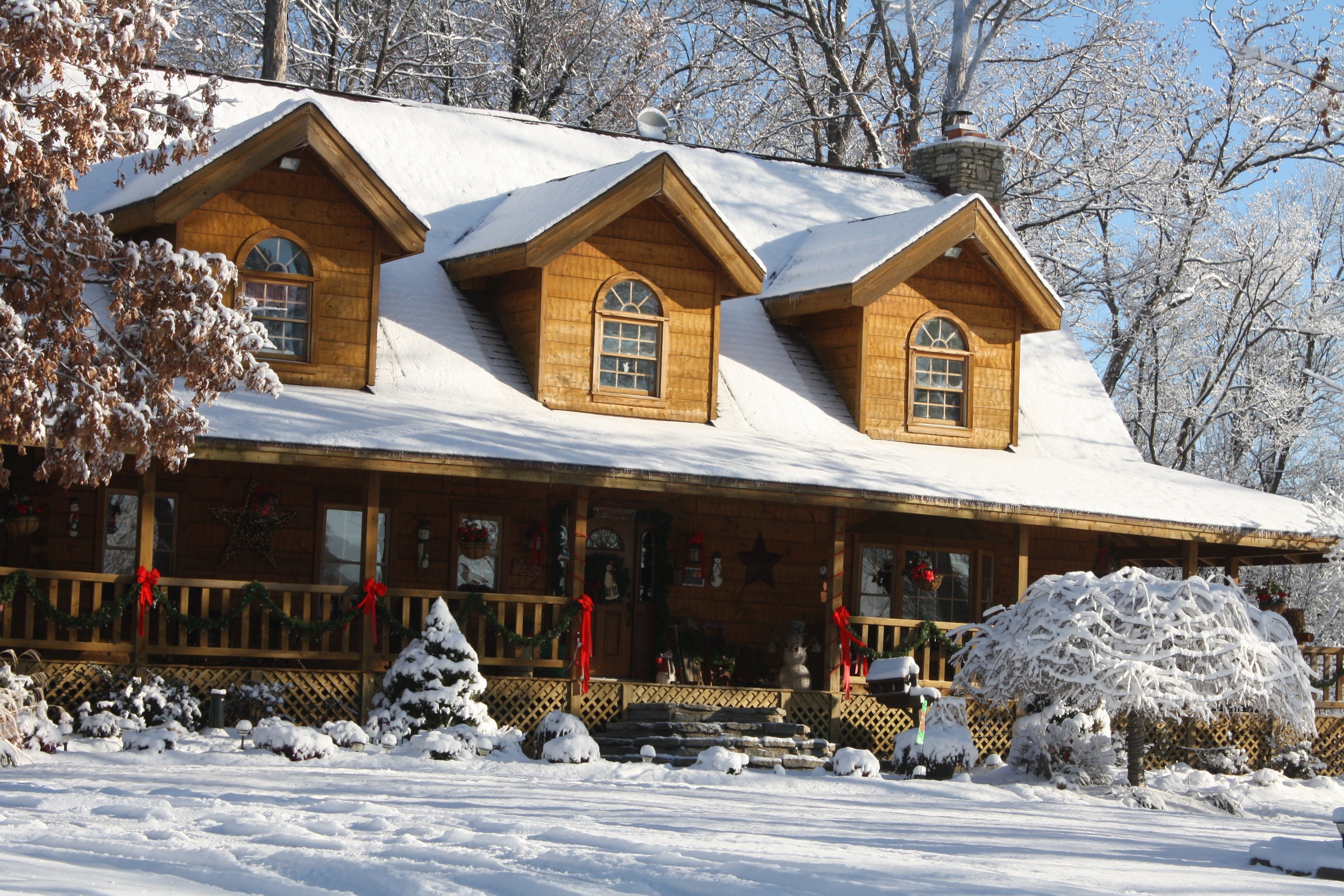
As temperatures begin to fall, your log home will weather the winter better if you follow a few tips that will protect your investment and help keep you comfortable.
Inspect Roof, Gutters, and Downspouts
If your local temperature will fall below 32 degrees in the winter, adding extra insulation to the attic, if needed, will prevent warm air from creeping to your roof and causing ice dams. Check flashing around the fireplace to ensure water can't enter your home. Consider replacing worn roof shingles or tiles. Clean out the gutters and use a hose to spray water down the downspouts to clear away debris. You may also want to install leaf guards on the gutters or extensions on the downspouts to direct water away from the home.
Check Foundations
Rake away all debris and edible vegetation from the foundation. Seal up entry points or cracks to keep small animals from crawling under and into the house. Mice can slip through space as thin as a dime. Secure crawlspace entrances.

Check the Exterior, Doors, and Windows & Logs
This step is critical for your health and safety. Inspect the exterior log wall for any crevice cracks and exposed entry points around pipes; seal them. Use weather-stripping around doors to prevent cold air from entering the home and caulk windows. Switch out summer screens with glass replacements from storage. If you have storm windows, install them.
Prevent Plumbing Freezes
Locate your water main in the event you need to shut it off in an emergency. Drain all garden hoses. Insulate exposed plumbing pipes. Drain air conditioner pipes, and if your AC has a water shut-off valve, turn it off. If you go on vacation, leave the heat on, set to at least 55 degrees.
Prepare Landscaping and Outdoor Surfaces
A winter storm can ravage the outdoors to such an extent that you can experience devastating effects in your surrounding area and while you're in your log home. Trim trees if branches hang too close to the house or electrical wires.

Get the fireplace ready
If your chimney hasn't been cleaned for a while, call a chimney sweep to remove soot and other undesirable accumulations, like creosote. It's best to cap or screen the top of the chimney to keep out rodents and birds. Buy firewood or chop your own. Whatever choice you make, store it in a dry place away from the exterior of your log home. Inspect the fireplace damper for proper opening and closing. Also check the flashing around the chimney to prevent water infiltration.
Following these simple steps will help keep you warm and cozy while Old Man Winter blows outside.



.png?width=137&height=70&name=blue-seal-120-61-bbb-21001218%20(1).png)